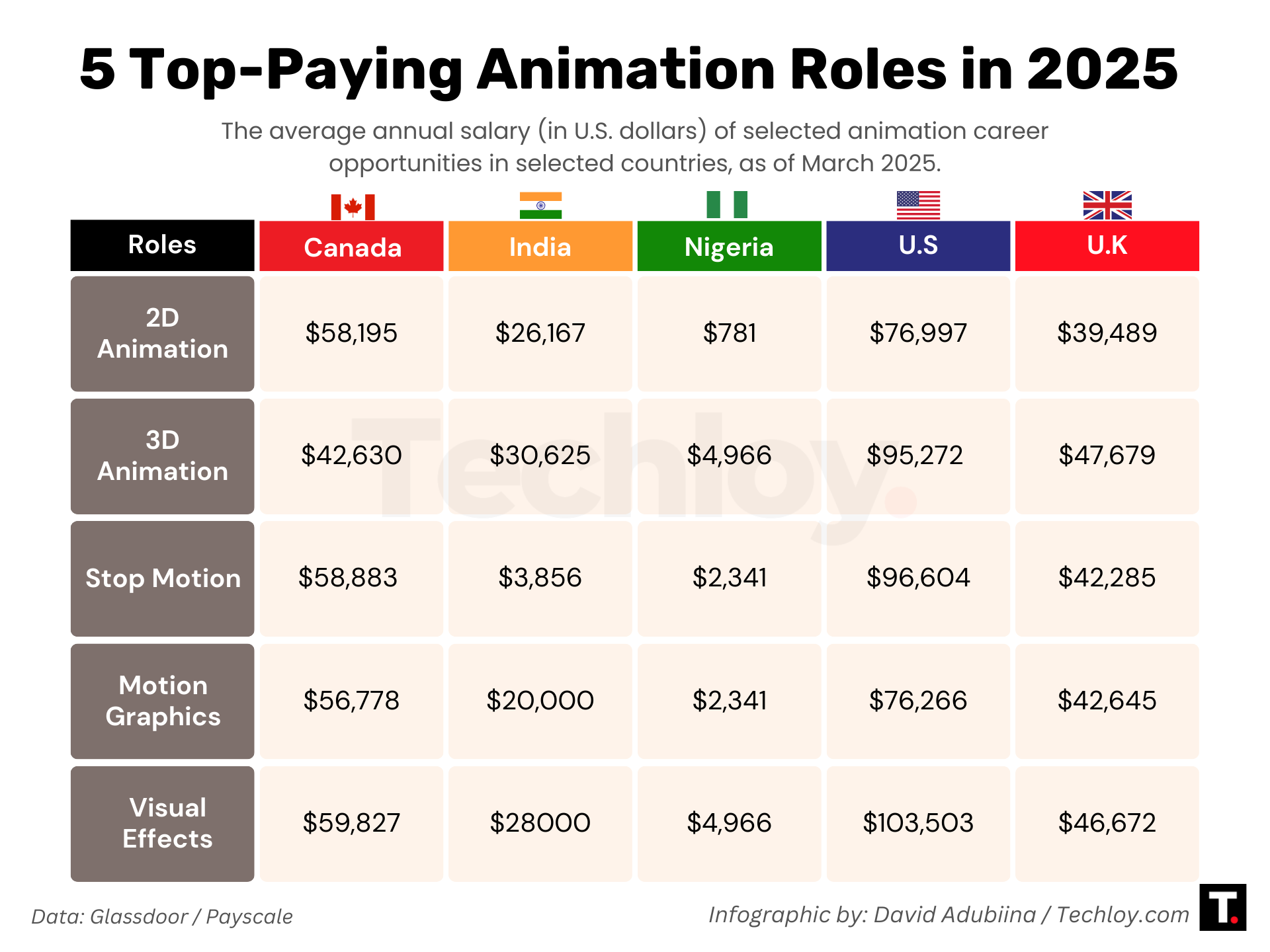Top 10 Interview Questions for Animation Roles and How to Answer
You’ve spent hours perfecting your animations—make your interview skills are just as sharp.

So, you’ve been contemplating a career in animation, completed some courses, honed your skills, and maybe even started building a portfolio. But now, you find yourself caught in the whirlwind of decisions—wondering what to expect in an animation interview or how to stand out from other candidates. It’s normal to feel overwhelmed at this stage, especially when it comes to preparing for interviews and making the best impression.
Reminds me of the time I had my interview for a Technology Writer—how anxious and unsettled I was. While the roles might be different, the anxiety and pressure to perform do not change and only intensify when you don't know what to do.
That's why proper preparation is key. Understanding the types of questions you'll face, knowing how to present your skills effectively, and having confidence in your abilities can make all the difference. In this guide, we'll walk through common animation interview questions, how to answer them, and the best strategies to leave a lasting impression on your potential employer.
But before diving into the specifics, it’s also important to know the different types of animation roles and the salary ranges in key regions.
Top Roles in Animation
- 2D Animation: Traditional hand-drawn or digital 2D animation created with tools like Toon Boom or Adobe Animate.
- 3D Animation: Creating 3D models and animations using software like Autodesk Maya or Blender. This is popular in movies, games, and simulations.
- Stop Motion: The process of photographing objects or characters frame by frame to create movement, often used in movies like The Nightmare Before Christmas.
- Motion Graphics: Animated graphics and text used in video productions, commercials, and branding.
- Visual Effects (VFX): The use of computer-generated imagery (CGI) to create environments or effects that are impossible to achieve in real life.
Salary Data by Region

10 Interview Questions for Animation Roles and How to Answer Them
1. Can you walk us through your animation portfolio?
Hiring managers ask this question a lot because they want to test how well you can present your work, your thought process and whether your style aligns with their projects.
Instead of just listing what’s in your portfolio, tell a story about your work. Pick a couple of standout pieces and explain your creative choices, the challenges you faced, and how you solved them. If possible, mention client feedback or any improvements you made based on revisions.
For Example:
"This project was a 3D character animation I did for a short film. The biggest challenge was nailing the fluidity of movement, especially since the character was a gymnast. I studied real-life footage, broke it down frame by frame, and adjusted the timing to make it feel more natural. In the end, the director was really happy with how lifelike it turned out."
2. What animation software are you most comfortable with, and why?
Most times, employers need to see if you are familiar with basic tools and to see if your skill set aligns with their workflow.
So, it is important to be honest about what tools you’re great at but also show that you’re adaptable. If you’re applying to a studio that primarily uses Blender and you’re a Maya expert, mention your willingness to learn.
Example:
"I primarily use Autodesk Maya for 3D animation because of its robust rigging and animation tools. But I’ve also worked with Blender and Unreal Engine for specific projects. I love learning new software, so if your team uses a different tool, I’d be excited to get up to speed."
3. What’s your animation workflow from start to finish?
For this question, employers expect you to be able to clearly articulate your animation process and demonstrate your understanding of key animation principles. They want to see that you have a structured approach and can efficiently bring a concept to life.
Walk them through your process step by step—concept, research, blocking, refining, and polishing. Keep it clear and practical.
Example:
"I start by understanding the character’s personality and movement style. If it’s a heavy character, I’ll add weight to the movements. Then I do rough blocking to get the key poses in place. After that, I work on timing and in-between frames to smooth things out, followed by refining details like secondary motion. Finally, I add polish, tweak expressions, and do final render checks before delivery."
4. Tell us about a time you received tough feedback on your animation. How did you handle it?
Every role has its challenges and learning curves, and the same goes for animation. So, most employers will ask this question to test if you can handle criticism without ego.
To answer the question, you can show that you’re open to feedback and can use it constructively. Bonus points if you mention how it improved your skills.
An example:
"On one project, I animated a character’s run cycle, and my lead told me it looked too ‘floaty’—like the character wasn’t making proper contact with the ground. At first, I didn’t see it, but I rewatched reference footage, adjusted the weight shifts, and tweaked the spacing. It ended up looking much better. That experience taught me to trust feedback and always step back to see things from another perspective."
5. What’s your favorite animation project you’ve worked on, and why?
What your interviewer wants to know by asking this question is your level of passion for animation, your creative problem-solving skills, and what aspects of animation excite you the most. They want to see how you engage with projects and what drives you as an animator.
You can pick a project you are passionate about and explain why it stood out. It could be because of a new technique you learned, a creative challenge, or simply the joy of bringing a character to life.
Example:
"My favorite project was animating a fight sequence for a short film. I loved the challenge of making the hits feel powerful and the movements dynamic. I studied martial arts videos to get the choreography right, and seeing the final result with sound and effects was so rewarding."
6. What would you do if you were working on an animation and suddenly hit a creative block?
Interviewers want to know how you handle challenges, stay productive, and push through creative roadblocks without losing momentum. With this, they assess your problem-solving skills, adaptability, and ability to maintain creativity under pressure.
To answer this question, share a few practical ways you overcome creative slumps, such as seeking inspiration from other artists, taking short breaks to reset your mind, brainstorming with a team, revisiting initial concepts, or experimenting with different animation techniques. You can also mention personal strategies, like sketching freely, watching reference material, or engaging in activities that help reignite creativity.
Here is an example:
"If I hit a creative block, I usually step away from my desk and look at real-life references or watch great animations for inspiration. Sometimes, I sketch rough thumbnails to get ideas flowing. If I’m really stuck, I ask a teammate for feedback—it’s amazing how fresh eyes can spot solutions I might not have considered."
7. What do you think makes an animation truly great?
You can think of this question as a way similar to what makes a great writing piece—clarity, engagement, and emotional depth. This is usually asked to gauge your understanding of animation principles and storytelling.
Talk about the emotional impact of animation—timing, weight, personality, and storytelling.
Here is a good example to help you understand:
"A great animation isn’t just about smooth movement—it’s about personality and storytelling. Whether it’s a simple walk cycle or a dramatic action scene, the audience should feel something. Subtle details, like the way a character shifts their weight or reacts to their surroundings, can make an animation truly believable."
8. Do you prefer working solo or in a team?
Here, employers want to know whether you can adapt to different work environments and balance independence with teamwork.
You can emphasize your flexibility by highlighting experiences where you have succeeded both individually and as part of a team.
For example:
"I enjoy both. When I’m animating, I love focusing on my work, but I also appreciate feedback and collaboration. In a team, I like bouncing ideas around and learning from others. I believe great animation is a mix of individual skill and teamwork."
9. How do you handle tight deadlines?
A simple interpretation of this question is: Can you stay productive under pressure?
You can answer by discussing your time management strategies, efficiency techniques, and how you prioritize tasks to meet deadlines without compromising quality.
Example:
"I break down tasks into milestones so I don’t get overwhelmed. I prioritize blocking and rough animations first to get the timing right before polishing details. And if I ever feel behind, I communicate early so the team can adjust accordingly."
10. Why do you want to work with us?
More often than not, employers want to know if you are genuinely interested in their company and how well you align with their values, mission, and goals.
A good way to answer this is to show that you’ve done your research and mention something specific you admire about their work, such as their culture, recent achievements, or industry impact.
Here is an example:
"I admire how your studio focuses on storytelling-driven animation. I’ve watched your latest short film, and I loved how expressive the character's work was. I’d love to be part of a team that values both creativity and technical excellence."
Conclusion
Interviews can feel overwhelming, but preparation and passion make all the difference. Stay confident, be yourself, and most importantly, enjoy the process. Think of it as a conversation, not just a test—your energy shines when you talk about what you love. Studios want more than just skills; they’re looking for creative minds who bring fresh ideas. So, relax, share your journey, and let your passion for animation do the talking.







